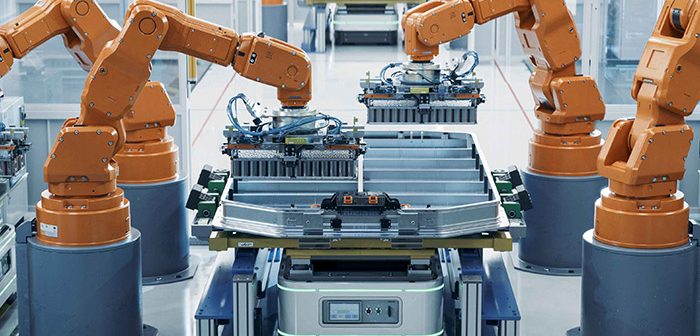
The Australian Government has rolled out its first National Robotics Strategy. Minister for Industry and Science Ed Husic says the strategy will unlock the vast benefits of robotics and automation technologies to build a Future Made in Australia.
“Investing in the skills of our people, along with investing in technology like robotics and automation, will help sharpen our advanced manufacturing edge and grow secure jobs,” he said on May 28, 2024. “We’ve seen when other countries like Germany and Japan invest in automation, they’re able to keep jobs and industry onshore in a competitive global environment. As our mining and ag sectors have shown, we’ve got some of the best robotics know-how in the world, but we’re 32nd for the take-up of industrial robots.”
The strategy aims to support Australian industries developing and using robotics and automation technologies to strengthen competitiveness, boost productivity and support local communities. Key components of the robotics strategy include;
- National capability: Building a strong, collaborative robotics and automation ecosystem that is recognised for its strengths, has a thriving domestic market and exports globally.
- Increasing adoption: Supporting Australian industries to integrate robotics and automation in ways that benefit Australian workers and communities.
- Trust, inclusion and responsible development and use: Ensuring robotics and automation in Australia are safe to use alongside Australian workers and are secure and inclusive by design.
-
Skills and diversity: Supporting Australians from all backgrounds to contribute to and benefit from the development and adoption of robotics and automation.
Husic says robotics and automation technologies could add up to AUD600 billion per annum to Australia’s GDP and increase productivity growth by up to 150%.
The Australian Academy of Technological Sciences and Engineering (ATSE) welcomed the strategy’s release. It says the strategy gets the foundations right by modernising definitions, which enables a shared understanding of technical terminology. It emphasises that growing a skilled and diverse workforce are critical to a thriving Australian robotics capability.
“The success of the Strategy depends on the availability of a highly trained workforce of STEM professionals, particularly engineers,” said ATSE CEO Kylie Walker. “As put forward in ATSE’s submission, building a robotics workforce is critical, and recruitment should include diverse and underrepresented groups identified through the Government’s Diversity in STEM review.”
Walker says the robotics strategy incorporates improvements to the draft framework, including recommendations suggested by ATSE in the consultation process and builds upon the work of the Robotics Australia Group, chaired by ATSE Fellow and Strategy advisory group member Sue Keay FTSE, in developing industry roadmaps.
“The Strategy’s success indicators outline a clear and achievable vision for bolstering the Australian robotics industry,” said Walker. “Increased robotics R&D expenditure and increased government procurement of Australian-made robotics systems will be central to building on our current robotics opportunities.”






